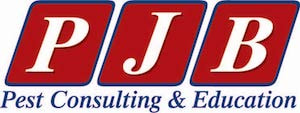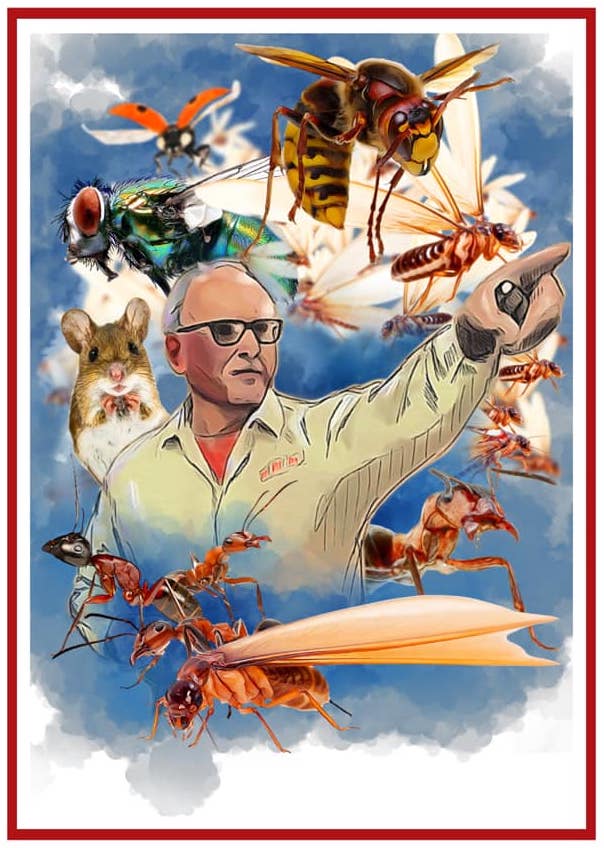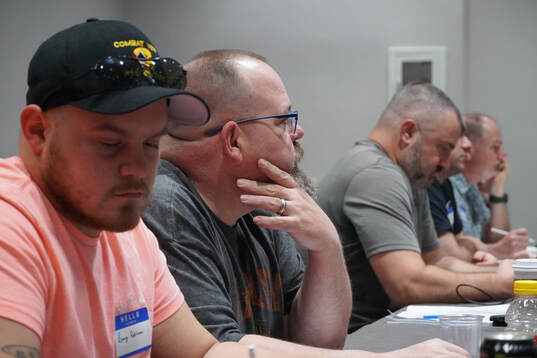Dear PJB Attendees,The ability to sound knowledgeable about your craft is not limited to those who have a college degree. In fact, the ability to learn is shared amongst all primates and is present in most humans. It is particularly well developed in those humans who have a genuine interest in increasing their professional knowledge, expanding their career opportunities and seeking excellence. The concept of Talk the Talk is nothing new. It is born of our daily interactions, experience and observation when dealing with other humans. Think about it carefully and draw upon your own recollections. Let’s say you were speaking with a mechanic about needed vehicle repairs, a contractor about work to be done or an appliance repair technician about services to be
conducted at your own home. It’s fair and reasonable to state that during these conversations the professional has the
opportunity to demonstrate their knowledge and expertise regarding his/her craft. Of course, this is true. The average consumer is not going to sign a service contract with any person who fails to adequately demonstrate suitable professional knowledge. Each pest professional has the opportunity to demonstrate superior knowledge, expertise and professionalism when communicating and interacting with consumers on a daily basis. The truth of the matter is that no one needs to have a college degree or PhD in Entomology to increase their overall Pest Management knowledge or Industry Professionalism. In fact, the opportunity to succeed in this arena is open to anyone who wishes to avail themselves of the various educational opportunities which are widely available and will set them apart from others. Below is a list of exemplary Industry terms. Learning the meaning of these terms and adopting their use in your Industry related daily vernacular will serve to help you along the way to become an excellent Industry Professional: Entomologically Sound – The work we plan to conduct at your home is Entomologically Sound.
This means that we must consider the biology and behavior of the Target Pest prior to selecting and implementing pest management methodologies. Biologically Sound – Vertebrate pest management methodologies must be Biologically Sound. PVAs – Pest Vulnerable Areas are those areas where pests may enter or harbor at your home. IPM – In our view, the most important word is Integrated. This is why we use multiple methodologies in an Integrated fashion to successfully resolve your pest problem. Thigmotropic – German cockroaches are Thigmotropic. This means that they prefer to hide in cracks & crevices where their body fits snugly. Negative Phototropic – German cockroaches are Negative Phototropic which means they prefer to remain out of lighted areas. Aggregate/Aggregation – German cockroaches do not build nests, rather they occupy spaces together as an Aggregation of multiple individuals. Body Parts – All insects have Body Parts including a head, thorax, abdomen, mouthparts, antennae and appendages. Pathogens – Pathogens are biological entities which cause diseases. Insect pests including cockroaches and others may transport and/or transmit disease causing pathogens to humans. Mechanical transmission – Mechanical transmission is the physical transport of a pathogen by an insect to a human environ. Translocation – Pathogens and other materials may be transported or translocated by pests. Trophallaxis – Insects share food via a process called Trophallaxis. Pheromones – Chemical signals used by insects for various purposes are called Pheromones. Spiracles – Insects breath through structures called Spiracles. Integument – An insect’s exterior surface may be referred to as its Integument. Chitin – An insect’s exoskeleton is composed of a material called Chitin which is the same material that a crustacean shell, i.e. crab, lobster, shrimp, is composed of. CSI – Insects may be controlled via the use of Chitin Synthesis Inhibitors. IGR – Insects may be controlled via the use of Insect Growth Regulators. Harborage – Insects may hide in certain cracks and crevices called Harborage areas. Fecal deposit – Insects and other pest activity may be detected via the observation of Fecal deposits or Fecal matter. Bacteria – Microscopic disease-causing organisms including Bacteria are transported by cockroaches and other pests. Tarsi – An insect’s foot is referred to as its Tarsi which is made up of tarsal segments. Cerci – Hair covered sensory structures arising near the tip of a cockroach abdomen are called Cerci. Antenna – Insects have a pair of Antenna emanating from their head. Mouthparts – Insects have a certain type of Mouthparts including chewing, piercing-sucking, sponging, siphoning and rasping. Scientific Facts – We need to rely upon Scientific Facts rather than opinions. Entry Points – Part of our inspection process includes the identification of pest Entry Points. Target Pest – To conduct successful pest management work requires that the biology and behavior of the Target Pest is considered such that the methodologies utilized are Entomologically Sound. Cracks & Crevices – Insect Harborage Areas are often Cracks & Crevices found within the structure. Environmentally responsible – The application of pesticides and other pest management work must be Environmentally Responsible. Forage Trails – Ants and subterranean termites travel along Forage Trails which are established by the deposition of Pheromones. Ectoparasites – Ectoparasites are those pests, such as bed bugs, fleas and lice, which may live and feed upon the surface of their host. Ecotone – Animal and pest activity tends to be greater along transition zones called Ecotones. Transition – The Transition area or zone between one type of ecosystem and another is called an Ecotone. Compound Eyes – Insects have Compound Eyes which are made up of numerous individual ommatidia. Conducive Conditions – Areas which may be attractive to and utilized by pests are called Conducive Conditions. Secondary Pests – Pests which may be associated and/or caused by the presence of a Target Pest are known as Secondary Pests. Secondary Pests may include fleas, dermestid beetles, flies and other such pests. Pronotal shield – The German Cockroach may be identified by the presence of two longitudinal stripes on the Pronotal Shield. Abdomen – The Abdomen is the hind section of the insect’s body. Sclerites – The individual section of the insect’s integument is called a Sclerite. Palpi/Palps – Insects, such as cockroaches, have external sensory organs to taste their food that are known as Palps. Integument – An insect’s outer surface may be referred to as the Integument. Impinge – Electron micrographs of insects which have been subject to the application of a micro-cap formulation illustrate the presence of numerous capsules which Impinge upon the insect’s Integument. Filiform Antennae – A type of long thin insect antenna are the Filiform Antenna. Geniculate Antennae – Geniculate Antenna are elbow like shaped antennae. Ants have Geniculate Antennae. Chewing mouthparts – Cockroaches have Chewing mouthparts. Metamorphosis – Insects develop via a process called Metamorphosis. Stages of Development – During Metamorphosis insects go through various Stages of Development which are also called Instars. Formulations – Insecticides are manufactured in a variety of Formulations for use by pest professionals. Galleries – Carpenter ants and Termites excavate Galleries in wood through which they travel unseen beneath the surface. |
Categories
All
Paul J. BelloAuthor, Consultant, Speaker, & Educator |
You Have Questions for Paul? Join Bed Bug Practical on Facebook |
Search for Articles Here
|
Telephone |
Get in Touch |


